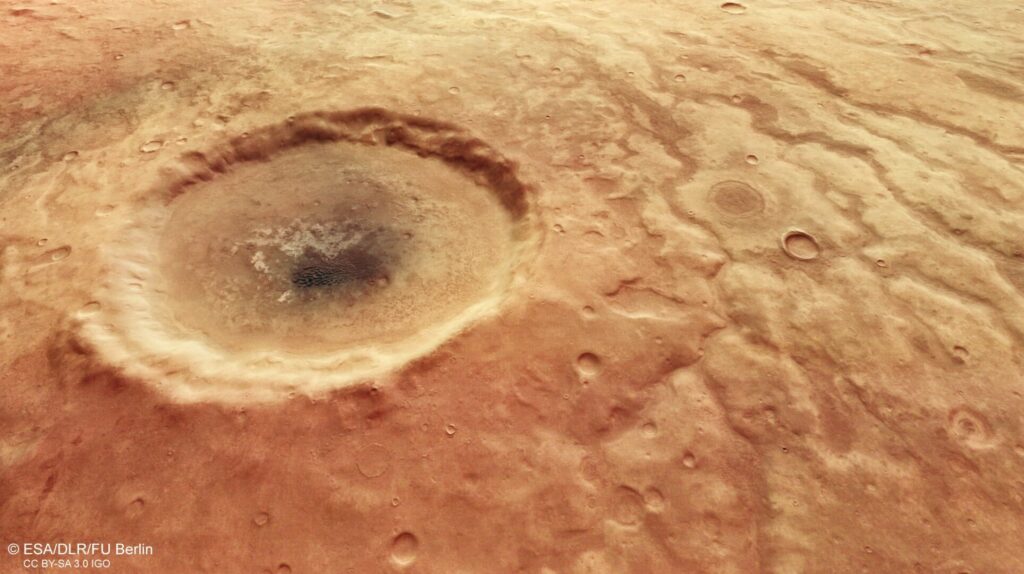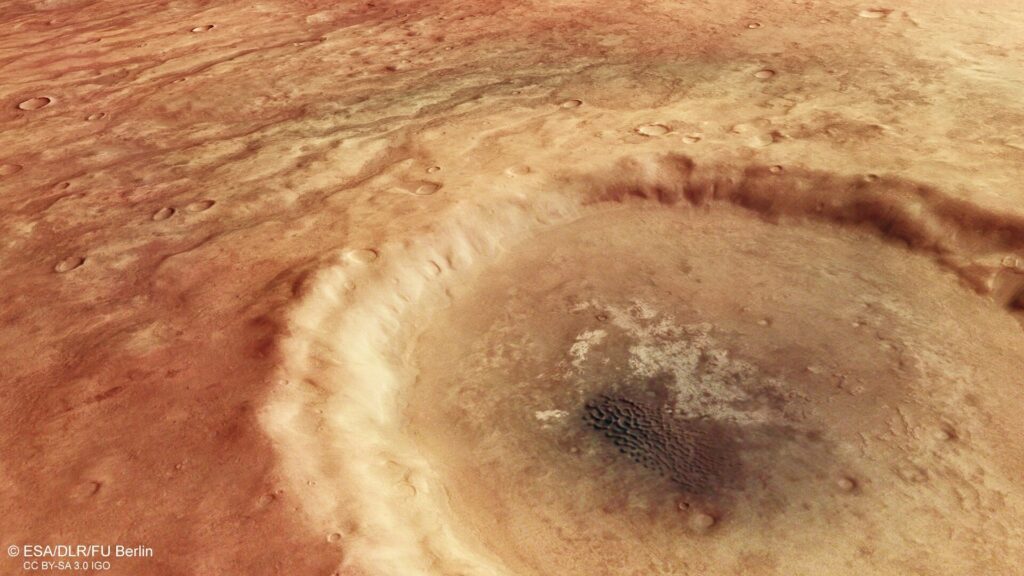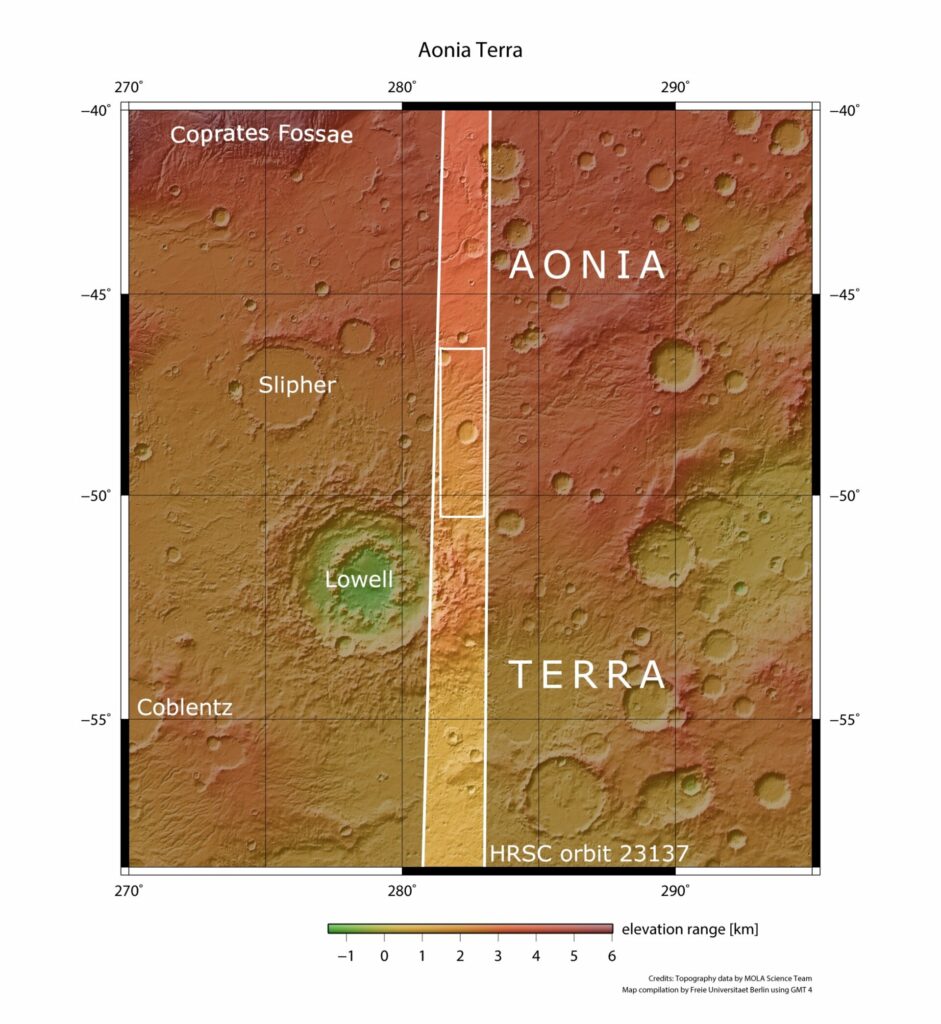The Mars Express mission support group has published a series of images of one of the sections of the Martian surface. They depict an unnamed crater, outwardly somewhat resembling a human eye.
“Eye” of Mars
The “eye” image was taken by Mars Express on April 25, 2022. The impact formation has a diameter of about 30 km. It is located in the Aonia Terra region — the highlands, located in the Southern Hemisphere of the Red Planet.

The crater lies among a network of winding channels. Apparently, these are the dried-up beds of ancient Martian rivers. Scientists believe that 3.5 – 4 billion years ago, water flowed through them. In some places, the channels even rise above the surrounding land. Perhaps this is due to the fact that the sediments deposited on their bottom turned out to be more resistant to erosion than the surrounding surface. Perhaps they were filled with lava.

In any case, thanks to the dark matter partially filling them, some of these ancient channels resemble veins, which gives the crater even more resemblance to an eye.
Colors of Mars
The Mars Express photo also demonstrates the diverse color scheme of the surface around the crater. This indicates that it is composed of various rocks. To the south of the funnel, the surface has a warm red color, gradually turning into a darker brownish-gray. In this region, you can see many hills resembling stone towers with flat tops. They are formed when the ground is gradually erased by water, wind or ice.

Inside the crater, you can see a dark dune field, as well as numerous different hills, indicating the accumulation of sedimentary materials. To the north of the impact formation, the surface is lighter and smoother. The edges of the crater and channels seem less pronounced.

As for the Aonia Terra region, it is home to several very impressive craters. The closest of them in relation to the “eye” is the 200-kilometer Lowell crater. It is believed that it was formed almost 4 billion years ago in the epoch of the “heavy late bombardment”, when numerous asteroids crashed into the inner planets of the Solar System.
According to https://www.esa.int
Follow us on Twitter to get the most interesting space news in time
https://twitter.com/ust_magazine

